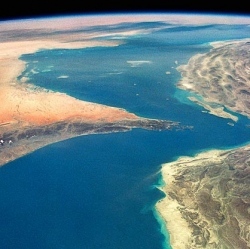
Two commercial airplanes vanished from radar in 2014. Although the wreckage of AirAsia QZ8501 has been recovered, Malaysia Airlines Flight 370 is still missing, with and search-and-rescue efforts coming up short. With all the tracking technology at our disposal in the modern age, it seems incredible that planes can still disappear.
GPS tracking has been around for ages, guiding your average car owner to his or her destination with the help of a soothing computerized voice. Yet airplane tracking and information gathering hasn’t evolved substantially in the past few decades, still heavily relying on ground-based radar and on-board black boxes that hold critical flight data. These technologies can fall short, as evidenced by Malaysia Airlines Flight 370, which went missing, black box and all, while flying out of radar range.
"In this day and age, lost aircraft should be a thing of the past."
The National Transportation Safety Board says it’s time for a change. In a new report, the NTSB made some major recommendations for the commercial aviation industry, claiming it’s time for passenger airplanes to be equipped with enhanced real-time tracking technologies, especially those airplanes flying over large bodies of water.
The agency recommends that all aircraft should be equipped with satellite tracking technologies, detecting an airplane’s position from space once every minute. The report also outlines ways to make an airplane’s black box much more locatable if an aircraft goes down, as well as ways to negate its need altogether.
"Technology has reached a point where we shouldn’t have to search hundreds of miles of ocean floor in a frantic race to find these valuable boxes," NTSB Acting Chairman Christopher Hart said in a statement. "In this day and age, lost aircraft should be a thing of the past."
Currently, airplanes are tracked through the air by two methods of positioning: primary radar and secondary surveillance. With primary detection, radar stations send out electromagnetic signals that bounce off any object in their path, indicating each plane’s position in the sky. With secondary surveillance, radar stations send signals specifically to a plane’s transponder, a radio transmitter in the cockpit. When the transponder receives these signals, it sends back information on the plane’s location, altitude, direction, and speed. Both of these processes require no cooperation from the pilots and are done automatically.
